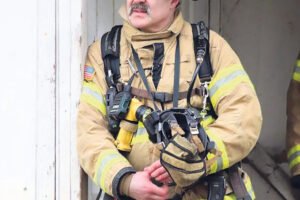Action by the Camas and Washougal city councils has made permanent a formerly temporary contract that has been more than two years in the making.
Last night, the Camas City Council unanimously approved an inter-local agreement with Washougal that officially establishes the consolidated Camas-Washougal Fire Department.
The Washougal City Council approved the same agreement, 6-1, last week.
For the past several months, an Ad Hoc Fire Consolidation Committee has guided the development of the agreement, focusing on hashing out key policy issues and creating a cost-sharing model.
The committee included Washougal City Councilors Connie Jo Freeman, Brent Boger and Dave Shoemaker, and Camas City Councilors Greg Anderson, Don Chaney and Linda Dietzman.
“Quite a team has been involved in putting together this document,” said Washougal City Administrator David Scott, during a recent joint meeting of the two city councils.



